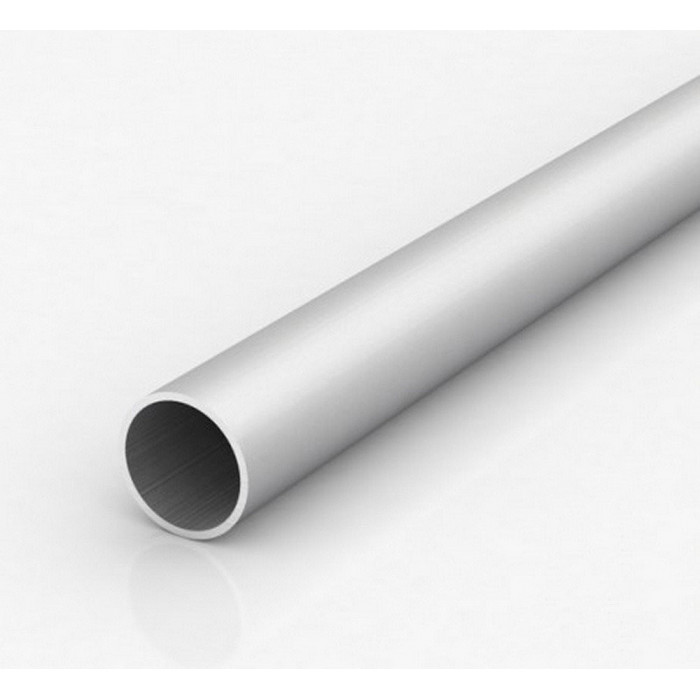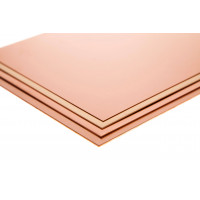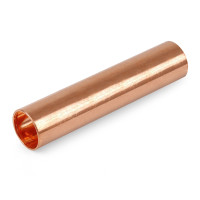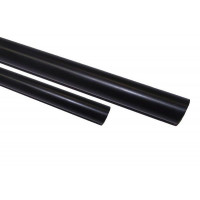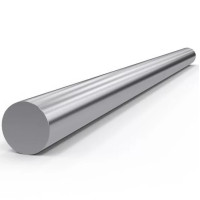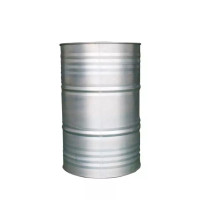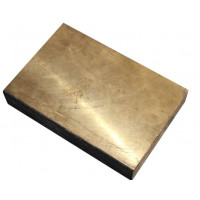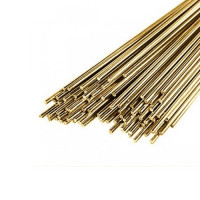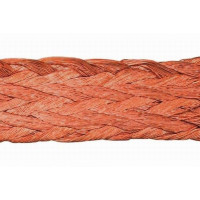Kharkiv pipe aluminum, round, square, 10x10-120x120 mm, AD31T5, AD0, D16T, AMG5 cutting
Aluminum pipes are valued for their lightness, ease of processing, metal resistance to moisture. Profile aluminum products are widely used in various fields - industrial production, construction, agriculture. Professional pipes can be made in two ways - pressing or cold deformation. According to the method of metal processing, products are divided into:
annealed;
hardened/naturally aged;
hardened/artificially aged.
Most often, hardened alloys are used for the manufacture of pipe profiles - with the addition of magnesium, copper, zinc, manganese.
aluminum pipe
Main properties and applications
Among the main properties for which aluminum pipes are valued are the corrosion resistance of the metal, as well as its low weight. These advantages compensate for the low strength of the products. The use of an aluminum pipe profile allows to reduce the load on the foundation, as well as the total weight of various structures. Among other advantages:
a large selection of shapes, sizes, diameters;
versatility of application;
resistance to low / high temperatures;
long service life - about 50 years;
ease of installation, processing;
attractive appearance;
relatively low price.
Aluminum profiled pipes are used almost everywhere. Let's look at some usage examples:
Construction. The profile is used to create a frame of various designs, organize cable systems, create shop windows, railings, fences, sheathing walls, ceilings, install windows, doors.
Production. Boxes are used for the manufacture of furniture, trade and exhibition equipment, ventilation and air conditioning systems, ladders, cornices, shelves, aviaries, etc.;
Industry. The aluminum profile is widely used in the chemical, food, medical, oil, ship, aircraft and automotive industries;
Water supply, sewerage. Organization of pipelines, sewerage, drainage systems, as well as irrigation systems.
Aluminum sewer pipe
GOSTs, TUs and other standards
The production of aluminum pipes is regulated by several regulatory documents. Among them:
GOST 18457-82 - cold-formed professional pipes of round, square, rectangular section;
GOST 22233-2001 - extruded profiles for translucent enclosing structures;
GOST 18482-2018 - production of pressed round pipes;
GOST 8617-2018 - interstate standard: extruded profiles from aluminum and aluminum alloys, specifications.
The composition of the alloys is indicated in GOST 4784-2019, and the grades of primary aluminum are defined in GOST 11069-2001.
Section shapes
Aluminum pipes can have different types of section. Consider the features of each type.
Hollow rolled products of round section are most often made of alloys AD1, AMG2, AMG5, D16, AD31T. Products differ in good flexibility, plasticity, well give in to processing. Most often used in the coal industry, construction, mechanical engineering, agriculture, as well as for the organization of water supply, heating, sewerage systems.
The main characteristics are the outer diameter of the product (D), wall thickness (S). The diameter can be from 6 to 160 mm, wall thickness - from 0.5 to 30 mm. They are also divided into thin-walled (up to 5 mm) and thick-walled (over 5 mm). Are issued in the form of pieces of random length, can be delivered in bays.
Square pipes (boxes) are characterized by increased strength due to symmetrical stiffeners. The flat edges of the product provide ease of fastening. Square profiles are easy to store and transport. They are often used for the installation of cable systems, air ducts, furniture, light load-bearing structures, fences. Aluminum alloys AD (AD0, AD31T, etc.) are most often used for manufacturing.
The main characteristics include height and width, which are always equal, as well as wall thickness. Standard sizes - from 10x10 to 150x150 mm, thickness - from 1 to 5 mm. They are produced in the form of segments, the length of which is a multiple of 6 meters.
aluminum pipe
Rectangular section
Boxes of rectangular section are most often used to reinforce one of the sides of the structure. They are usually used in conditions of increased and prolonged mechanical loads, for the organization of pipelines, various communication channels.
Standard sizes of pipe sides are from 10x20 to 180x40. Wall thickness - from 1 to 5 mm. They are produced in the same way as square ones - in the form of segments of a multiple measured length.
aluminum pipe aluminum pipe
Profile
Profile pipes include all pipes, except for products with a round section: square, rectangular, and also shaped - profiles with a non-standard section. Unlike round ones, they are distinguished by a more rigid structure (due to stiffening ribs).
Labeling rules
Marking of aluminum pipes contains information about the brand of alloy, dimensions, wall thickness, type of processing, release form(the length or BT is indicated if the products are supplied in coils).
Professional pipes made by hot pressing are not indicated by any letters. For other products, standard marking is used:
M - annealed;
H - hard-worked;
H2 - semi-hardened;
T - hardened / naturally aged;
T1 - hardened / artificially aged.
Let's take an example. Boxing AD31T1 25x12x1.5x6000 is a pipe made of AD31T1 alloy (hardened and artificially aged), with a side size of 25x12 mm, a wall thickness of 1.5 mm, and a length of 6 meters.
aluminum pipe
Application features
Aluminum profiles require careful handling even at the stage of transportation. They can be bent or scratched. Therefore, when loading professional pipes into vehicles for transportation, it is recommended to fold them in such a way that other objects cannot fall from above. It is desirable to pack them in cardboard or polyethylene.
Welding aluminum requires serious professional skills, so this method is rarely used in everyday life. Most often, pipes are fixed using fittings, bolts or crab systems. Such fasteners require maintenance - approximately twice a year, it is recommended to check the joints, tighten if necessary.
Aluminum pipes are valued for their lightness, ease of processing, metal resistance to moisture. Profile aluminum products are widely used in various fields - industrial production, construction, agriculture. Professional pipes can be made in two ways - pressing or cold deformation. According to the method of metal processing, products are divided into:
annealed;
hardened/naturally aged;
hardened/artificially aged.
Most often, hardened alloys are used for the manufacture of pipe profiles - with the addition of magnesium, copper, zinc, manganese.
aluminum pipe
Main properties and applications
Among the main properties for which aluminum pipes are valued are the corrosion resistance of the metal, as well as its low weight. These advantages compensate for the low strength of the products. The use of an aluminum pipe profile allows to reduce the load on the foundation, as well as the total weight of various structures. Among other advantages:
a large selection of shapes, sizes, diameters;
versatility of application;
resistance to low / high temperatures;
long service life - about 50 years;
ease of installation, processing;
attractive appearance;
relatively low price.
Aluminum profiled pipes are used almost everywhere. Let's look at some usage examples:
Construction. The profile is used to create a frame of various designs, organize cable systems, create shop windows, railings, fences, sheathing walls, ceilings, install windows, doors.
Production. Boxes are used for the manufacture of furniture, trade and exhibition equipment, ventilation and air conditioning systems, ladders, cornices, shelves, aviaries, etc.;
Industry. The aluminum profile is widely used in the chemical, food, medical, oil, ship, aircraft and automotive industries;
Water supply, sewerage. Organization of pipelines, sewerage, drainage systems, as well as irrigation systems.
Aluminum sewer pipe
GOSTs, TUs and other standards
The production of aluminum pipes is regulated by several regulatory documents. Among them:
GOST 18457-82 - cold-formed professional pipes of round, square, rectangular section;
GOST 22233-2001 - extruded profiles for translucent enclosing structures;
GOST 18482-2018 - production of pressed round pipes;
GOST 8617-2018 - interstate standard: extruded profiles from aluminum and aluminum alloys, specifications.
The composition of the alloys is indicated in GOST 4784-2019, and the grades of primary aluminum are defined in GOST 11069-2001.
Section shapes
Aluminum pipes can have different types of section. Consider the features of each type.
aluminum pipe
round section
Hollow rolled products of round section are most often made of alloys AD1, AMG2, AMG5, D16, AD31T. Products differ in good flexibility, plasticity, well give in to processing. Most often used in the coal industry, construction, mechanical engineering, agriculture, as well as for the organization of water supply, heating, sewerage systems.
The main characteristics are the outer diameter of the product (D), wall thickness (S). The diameter can be from 6 to 160 mm, wall thickness - from 0.5 to 30 mm. They are also divided into thin-walled (up to 5 mm) and thick-walled (over 5 mm). Are issued in the form of pieces of random length, can be delivered in bays.
aluminum pipe
square section
Square pipes (boxes) are characterized by increased strength due to symmetrical stiffeners. The flat edges of the product provide ease of fastening. Square profiles are easy to store and transport. They are often used for the installation of cable systems, air ducts, furniture,some load-bearing structures, fences. Aluminum alloys AD (AD0, AD31T, etc.) are most often used for manufacturing.
The main characteristics include height and width, which are always equal, as well as wall thickness. Standard sizes - from 10x10 to 150x150 mm, thickness - from 1 to 5 mm. They are produced in the form of segments, the length of which is a multiple of 6 meters.
aluminum pipe
Rectangular section
Boxes of rectangular section are most often used to reinforce one of the sides of the structure. They are usually used in conditions of increased and prolonged mechanical loads, for the organization of pipelines, various communication channels.
Standard sizes of pipe sides are from 10x20 to 180x40. Wall thickness - from 1 to 5 mm. They are produced in the same way as square ones - in the form of segments of a multiple measured length.
aluminum pipe aluminum pipe
Profile
Profile pipes include all pipes, except for products with a round section: square, rectangular, and also shaped - profiles with a non-standard section. Unlike round ones, they are distinguished by a more rigid structure (due to stiffening ribs).
Labeling rules
The marking of aluminum pipes contains information about the alloy grade, dimensions, wall thickness, type of processing, release form (length or BT is indicated if the products are supplied in coils).
Professional pipes made by hot pressing are not indicated by any letters. For other products, standard marking is used:
M - annealed;
H - hard-worked;
H2 - semi-hardened;
T - hardened / naturally aged;
T1 - hardened / artificially aged.
Let's take an example. Boxing AD31T1 25x12x1.5x6000 is a pipe made of AD31T1 alloy (hardened and artificially aged), with a side size of 25x12 mm, a wall thickness of 1.5 mm, and a length of 6 meters.
aluminum pipe
Application features
Aluminum profiles require careful handling even at the stage of transportation. They can be bent or scratched. Therefore, when loading professional pipes into vehicles for transportation, it is recommended to fold them in such a way that other objects cannot fall from above. It is desirable to pack them in cardboard or polyethylene.
Welding aluminum requires serious professional skills, so this method is rarely used in everyday life. Most often, pipes are fixed using fittings, bolts or crab systems. Such fasteners require maintenance - approximately twice a year, it is recommended to check the joints, tighten if necessary.
Aluminum pipes are valued for their lightness, ease of processing, metal resistance to moisture. Profile aluminum products are widely used in various fields - industrial production, construction, agriculture. Professional pipes can be made in two ways - pressing or cold deformation. According to the method of metal processing, products are divided into:
annealed;
hardened/naturally aged;
hardened/artificially aged.
Most often, hardened alloys are used for the manufacture of pipe profiles - with the addition of magnesium, copper, zinc, manganese.
aluminum pipe
Main properties and applications
Among the main properties for which aluminum pipes are valued are the corrosion resistance of the metal, as well as its low weight. These advantages compensate for the low strength of the products. The use of an aluminum pipe profile allows to reduce the load on the foundation, as well as the total weight of various structures. Among other advantages:
a large selection of shapes, sizes, diameters;
versatility of application;
resistance to low / high temperatures;
long service life - about 50 years;
ease of installation, processing;
attractive appearance;
relatively low price.
Aluminum profiled pipes are used almost everywhere. Let's look at some usage examples:
Construction. The profile is used to create a frame of various designs, organize cable systems, create shop windows, railings, fences, sheathing walls, ceilings, install windows, doors.
Production. Boxes are used for the manufacture of furniture, trade and exhibition equipment, ventilation and air conditioning systems, ladders, cornices, shelves, aviaries, etc.;
Industry. The aluminum profile is widely used in the chemical, food, medical, oil, ship, aircraft and automotive industries;
Water supply, sewerage. Organization of pipelines, sewerage, drainage systems, as well as irrigation systems.
Aluminum sewer pipe
GOSTs, TUs and other standards
The production of aluminum pipes is regulated by several regulatory documents. Among them:
GOST 18457-82 - cold-formed professional pipes of round, square, rectangular section;
GOST 22233-2001 - extruded profiles for translucent enclosing structures;
GOST 18482-2018 - production of pressed round pipes;
GOST 8617-2018 - interstate standard: extruded profiles from aluminum and aluminum alloys, specifications.
Sothe grade of alloys is indicated in GOST 4784-2019, and the grades of primary aluminum are defined in GOST 11069-2001.
Section shapes
Aluminum pipes can have different types of section. Consider the features of each type.
aluminum pipe
round section
Hollow rolled products of round section are most often made of alloys AD1, AMG2, AMG5, D16, AD31T. Products differ in good flexibility, plasticity, well give in to processing. Most often used in the coal industry, construction, mechanical engineering, agriculture, as well as for the organization of water supply, heating, sewerage systems.
The main characteristics are the outer diameter of the product (D), wall thickness (S). The diameter can be from 6 to 160 mm, wall thickness - from 0.5 to 30 mm. They are also divided into thin-walled (up to 5 mm) and thick-walled (over 5 mm). Are issued in the form of pieces of random length, can be delivered in bays.
aluminum pipe
square section
Square pipes (boxes) are characterized by increased strength due to symmetrical stiffeners. The flat edges of the product provide ease of fastening. Square profiles are easy to store and transport. They are often used for the installation of cable systems, air ducts, furniture, light load-bearing structures, fences. Aluminum alloys AD (AD0, AD31T, etc.) are most often used for manufacturing.
The main characteristics include height and width, which are always equal, as well as wall thickness. Standard sizes - from 10x10 to 150x150 mm, thickness - from 1 to 5 mm. They are produced in the form of segments, the length of which is a multiple of 6 meters.
aluminum pipe
Rectangular section
Boxes of rectangular section are most often used to reinforce one of the sides of the structure. They are usually used in conditions of increased and prolonged mechanical loads, for the organization of pipelines, various communication channels.
Standard sizes of pipe sides are from 10x20 to 180x40. Wall thickness - from 1 to 5 mm. They are produced in the same way as square ones - in the form of segments of a multiple measured length.
aluminum pipe aluminum pipe
Profile
Profile pipes include all pipes, except for products with a round section: square, rectangular, and also shaped - profiles with a non-standard section. Unlike round ones, they are distinguished by a more rigid structure (due to stiffening ribs).
Labeling rules
The marking of aluminum pipes contains information about the alloy grade, dimensions, wall thickness, type of processing, release form (length or BT is indicated if the products are supplied in coils).
Professional pipes made by hot pressing are not indicated by any letters. For other products, standard marking is used:
M - annealed;
H - hard-worked;
H2 - semi-hardened;
T - hardened / naturally aged;
T1 - hardened / artificially aged.
Let's take an example. Boxing AD31T1 25x12x1.5x6000 is a pipe made of AD31T1 alloy (hardened and artificially aged), with a side size of 25x12 mm, a wall thickness of 1.5 mm, and a length of 6 meters.
aluminum pipe
Application features
Aluminum profiles require careful handling even at the stage of transportation. They can be bent or scratched. Therefore, when loading professional pipes into vehicles for transportation, it is recommended to fold them in such a way that other objects cannot fall from above. It is desirable to pack them in cardboard or polyethylene.
Welding aluminum requires serious professional skills, so this method is rarely used in everyday life. Most often, pipes are fixed using fittings, bolts or crab systems. Such fasteners require maintenance - approximately twice a year, it is recommended to check the joints, tighten if necessary.
The ductility of aluminum allows a fairly wide range of operations with finished pipes, limited to the use of portable equipment and hand tools. In addition to bending and welding, aluminum pipes are relatively easy to cut, expand, drill. With the help of a special tool, pipes can be connected to each other by flanging.
No questions about this product, be the first and ask your question.

